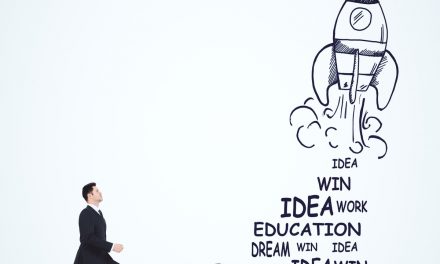A Manager tells people to follow them. Their role is to plan, organise and coordinate… remember, management is about the measurement of people, performance and processes…
But a Leader shows people they’re worth following. Their role is to coach, inspire and motivate their teams… for them it’s about the development of people, performance and processes.
To become a successful leader, you must be skilled in both leadership and management… You must be resilient. Great resilience is a mixture of four key qualities;
- Confidence – Be confident in your ability to cope with stressful situations and have strong self-belief. You must be capable of overcoming negative emotions and focusing on the positive. I’ll never forget a great piece of advice I was given by one of my early mentors, “Dave, nothing is ever as good or as bad as it first appears, so before you get over excited or very disappointed keep asking questions until you have all the facts.”
- Purposefulness – you must have a clear sense of purpose, values, drive and direction. This will help you to keep going and achieve success even in the face of seemingly insurmountable setbacks.
- Adaptability – change is constant, you must be flexible and prepared to adapt to these changes, even when they’re beyond our control. Always look for the opportunity in change and recovery from its impact will be much quicker.
- People skills – an ability to build good relationships with others can help you overcome adverse situations by gaining their support rather than trying to cope alone.
The purpose of leadership is to create more leaders – Ralph Nader
Current research suggests that great leadership is directly proportional to the level of self-awareness and emotional intelligence (EQ) of the leader.
Emotional intelligence is the ability to manage ourselves and our relationships effectively. It consists of four fundamental capabilities, which are in turn, composed of specific sets of competencies.
The first capability of EQ is self-awareness. How do you recognise and control your emotional reaction in any given situation? Do you react or respond? Do you regularly reflect and assess these situations and how confident are you in them?
The best thing leaders can do to increase their performance and improve their effectiveness is to become more aware of what motivates them and how they make decisions.
Without self-awareness, you cannot fully understand your strengths and weaknesses. It is self-awareness that allows great business leaders to walk the leadership tightrope.
It helps you to show confidence and self-belief while remaining humble enough to be open to new ideas and opposing opinions.
The primary focus of Renegades is to help you create sufficient leaders in your business in order that the business can manage without you at its core.
So, we designed the Renegade Path to help facilitate this process and free you from the self-imposed prison that is your business.
We want you to lead your people with significance and the first step in this process is to understand yourself better and improve your awareness.
You need to understand your;
- Motivations and values
- Preferences
- Behaviours
- Leadership Style
- And impact
You need to understand your personal style and how it’s perceived by those around you, then explore your strengths, weaknesses, opportunities and threats in relation to the Renegade Path. You should evaluate the impact and opportunities of adapting your style, drawing on the experience of using different styles in different situations and ask your team for feedback and support. Finally, you must understand the links to your aspirations and how this all drives your personal development.
So how self-aware are you?
Self-awareness is simply knowing who you are and understanding why you think, feel and behave the way you do. Without it you’ll almost certainly repeat the same mistakes and may never break through the internal barriers to your own growth. By harnessing the power of self-awareness, it’ll help you to make better decisions, get more out of the people you work with, communicate more effectively by tailoring your message to the needs of your listener, increase your prospects of creating the self-managing team and reduce your levels of stress and become more resilient.
The second capability of EQ is self-management. How strong is your self-control? Are you trustworthy and reliable? Can you adapt to different situations and show initiative when required? How conscientious, determined and committed are you?
Third is social awareness. Are you ready, willing and able to serve others? Are you prepared to do the things that you ask others to do? Do you demonstrate empathy and understanding to those you lead? Can you honestly say you fully understand your organisational structure and the delicate nuances of the relationships within it?
And the fourth capability is social skills. Emotionally intelligent leaders are visionaries. You must develop and communicate a clear vision of how the business will look when it’s done. You must be capable of influencing others to share that vision and develop them whilst on the journey to achieve it. You must learn to communicate at every level of your business in a way that meets your people where they are.
You must be ready to adapt as and when change occurs and lead others through those changes. You must build bonds, manage conflict, encourage teamwork and develop a collaborative culture to ensure your team are ready to face any challenge that comes their way.
What about your style of Leadership?
In his book, ‘leadership that gets results’, Daniel Goleman suggests there are six emotional styles of leadership.
- Commanding – this leader demands immediate compliance, ‘it’s my way or the highway’. Whilst this style may work in a crisis, it can have a very negative impact on people and culture.
- Visionary – this leader mobilises people toward a vision, ‘come with me’. This can be in incredibly positive impact on your people and create a virtuous culture.
- Affiliative – this leader creates harmony and builds emotional bonds, ‘let’s do what’s best for everyone’. This style usually has a very positive impact on your team.
- Democratic – this leader forges consensus through participation, ‘let’s decide what to do together’. This style also has a very positive impact on your team.
- Pacesetter – this leader sets high standards for performance, ‘watch me and do what I do’. This can be a very dangerous style as it can de-motivate team members who may not be able to keep the same pace as the leader.
- Coaching – this leader develops people for future performance, ‘how can I help you improve?’ An excellent style to develop long-term strategies to improve the performance of your people and the business. You can, and should, use a mixture of these styles, customised to the situation and your people, in order to gain the most effective results.
Are you a strategic leader or a tactical leader?
There is no right or wrong way to lead and the best leaders combine both very effectively. However, it is important to know how, and when, to tap into your strategic or tactical side to be most successful. An effective leader is in tune with the business and where it needs to be. He or she can wear the hat of a strategist or become the tactics master whenever appropriate. It all depends on what the business, and the team needs at any given point in time.
Tactical Leadership
Tactical leaders are the list people. They’re organised and detailed. For a great tactical leader, it’s all about the plan. The details are very important to them and the execution of every checkbox in the plan is imperative. Tacticians are also the most prepared people. They’re carefully crafted and precise. These are the kind of people you want next to you in battle because they’re going to be thorough and accurate in whatever they do.
They’re great at building the framework of a plan but sometimes the execution of the plan takes precedence over the people involved. It’s more important to check the box than how people feel along the way. A tactical leader can sometimes be too risk averse.
Strategic Leadership
Strategic people can see the future with clarity. They can envision things and paint the picture. Great strategic leaders can zoom out and not be distracted by the detail around them. They can often find success by just jumping in and figuring out a situation without a plan. Many strategic thinkers do not care about the details. They care about the end results. They are often known to have a lot of charisma, and to lead through force of personality. They often succeed because they inspire others to share their passion.
While strategic leaders have vision, they often have a hard time painting it for others and they can also be cooler tactical planners. Strategic people are often much more concerned about the goal and not so much about if they missed a few steps along the way.
It’s important to know your own strengths and weaknesses as well as those of the people around you. Through a better understanding, you’ll be able to make the most of your own talents and build more effective teams.
It is important to know how, and when, to tap into your strategic or tactical side to be most successful
Strategic Agility
Strategic agility is the ability to continuously adjust and adapt your strategic direction as your ambitions and circumstances change. Being agile will not only help you create new products and services but maybe completely new business models and innovative ways to create value for your business.
There are typically four stages of successful strategic thinking. Strategic leaders make sure that all stages are covered, and if necessary go back to previous stages if more information comes to light or there are other options to consider.
Stage one – create a culture of planned reviews and continuous improvement (kaizen) by encouraging your team to continuously explore ways to improve how you do things in your business.
Stage two – take the time to make sense of the situation and understand the who, what, why, when and how…
Stage three – assess the options available, consider the risks of each, develop your ideas and make your choices…
Stage four – create a clear plan of action including roles, responsibilities and deadlines then make it happen!
It’s all too easy to miss out to the stages of ‘making sense of the situation’ and reviewing and improving. When this happens, leaders can find themselves constantly in ‘the ideas’ and ‘make it happen’ stages and stuck in operational mode, which can cause them to miss critical information and potentially not improving from lessons learned.
Remember…
Emotional Intelligence + Leadership Styles + Positive Environment = Peak Performance and Exceptional Results!!





